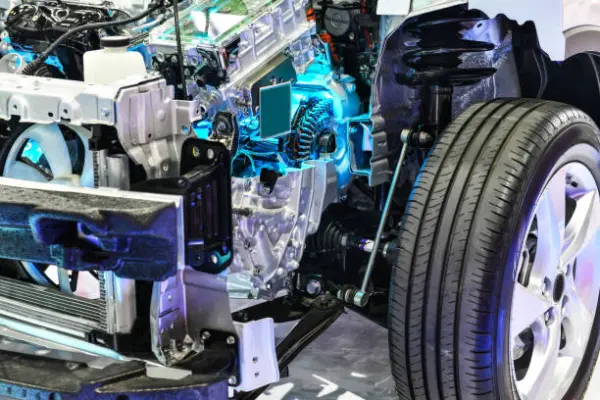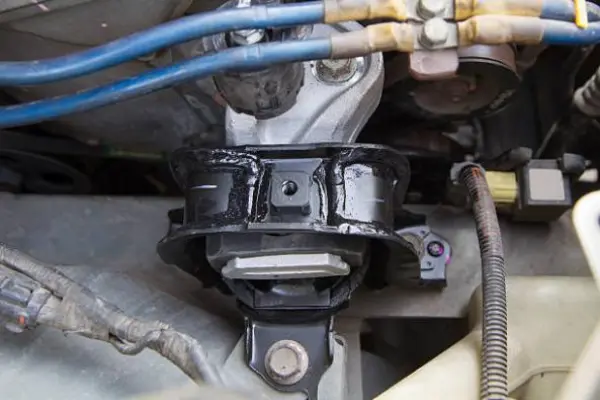Engine mounts (aka "motor mounts" or "engine feet") aren't one-size-fits-all—choosing the right material can make or break your ride's comfort, durability, and cost.It is an important component of your car's Chassis System.This guide pits classic rubber against modern hydraulic mounts, drawing from real-world tech breakdowns on Zhihu. Rubber's simple and cheap but stiffens with age; hydraulic's a vibe-killer with fluid damping but prone to leaks. For German cars (VW, Audi, BMW), hydraulic often wins for balance. We'll unpack pros/cons, when to pick each, and shop hacks to avoid $500+ regrets. Pro tip: Always match your OEM spec—mismatching amps up vibrations and shortens life. The VDI Engine Mount 5Q0199262BJ is a good choice.

Engine mounts bolt your motor to the chassis, swallowing torque twists and road jolts. Materials dictate how well they do it:
· Rubber Mounts: Solid blocks of vulcanized rubber (often with metal casings). Cheap, basic, everywhere in older/ economy cars.
· Hydraulic Mounts: Rubber shell filled with fluid (glycol or silicone) + internal chambers/valves. Smarter damping via controlled "sloshing."
Zhihu threads (with 2k+ upvotes) hammer this: Wrong material = premature wear, noise, or even trans damage. Let's break it down.
Pros:
· Affordable & Simple: Easy swap, no fluid mess. Lasts 80k-120k miles in mild use.
· Tough in Heat/Cold: Handles extreme temps without leaking; great for hot climates or basic commuters.
· Low Maintenance: No internals to fail—just inspect for cracks every 20k miles.
Cons:
· Stiffens Over Time: Ages to "rock hard," transmitting every engine vibe to the cabin (hello, dashboard rattle).
· Poor High-Torque Damping: Big engines (V6+) flop more, stressing axles/CV joints.
· Noise Creep: Starts subtle (idle buzz), ends with clunks—common in 100k+ mile cars.
Real Experience: A user with a 2015 Honda Civic swapped rubber at 90k miles for $150 total. "Vibes gone, but after 2 years, it's stiff again—rubber's fine for daily drivers, not haulers." If you are using the Volkswagen/Audi platform, directly select the Engine mount 5Q0199262BJ and skip this loop.

Pros:
· Superior Vibration Control: Fluid shifts between chambers, tuning stiffness by RPM/load—feels like floating on highways. Cuts NVH (noise/vibe/harshness) by 50-70%.
· Longer Life in Demands: Handles turbo lag or towing better; lasts 100k-150k miles.
· OEM Favorite: Standard on premium rides (Audi Q5, BMW X3)—matches ECU for adaptive damping. Or a high-quality aftermarket brand VDI Engine Mount 5Q0199262BJ.
Cons:
· Leak-Prone: Seals fail from heat/oil exposure, spilling fluid and collapsing (sudden clunks).
· Complex & Pricey: DIY tricky (fluid top-up needed sometimes).
· Overkill for Basics: Adds weight/complexity—no point in a base Civic.
Real Experience: Thread star (mech engineer) on a 2020 VW Tiguan: "Hydraulic mounts shine in German cars—smooth as silk up to 120k km. But leak once? Rust eats the bracket fast. Always bleed air post-install."
| Aspect | Rubber Mounts | Hydraulic Mounts |
| Cost | Low | Higher |
| Damping | Basic (stiffens with age) | Advanced (fluid-tuned) |
| Durability | Good in mild use; cracks easy | Excellent under load; leaks risk |
| Maintenance | Visual checks only | Fluid/seal inspections |
| Best For | Economy cars, low-torque | Premium/German (VW/Audi/BMW) |
· Spot Trouble: Power-brake test (brake + rev in Drive)—>2cm engine rock? Time's up.
· Upgrade Path: Stock rubber failing? Hydraulic for comfort; poly for track (stiffer, no leaks, but harsh).
· Cost-Saver: OEM cross-ref (e.g., VW 7L8 199 551 for hydraulic)—aftermarket like VDI saves 40% without skimping.
· Zhihu Case Study: A BMW 3-Series owner ignored hydraulic leak at 70k miles—rust spread to frame, $1,200 fix vs. $300 early swap. "Deutsche engineering loves fluid damping—don't cheap out."
Rubber's your budget buddy for simple duties; hydraulic's the premium pick for refined damping (especially in German iron). Mismatch? Expect vibes, noises, and early death. Check yours quarterly—your wallet (and back) will thank you.
VDI provides high-quality Engine Mount 5Q0199262BJ for your Chassis System.